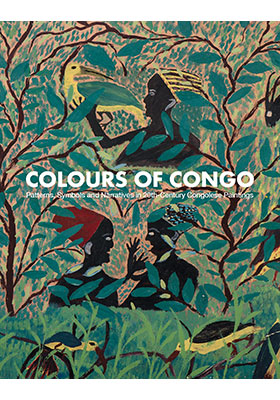Colours of Congo
Patterns, Symbols and Narratives in 20th-Century Congolese Paintings
(剛果的色彩:20世紀剛果繪畫中的圖案、符號和敘述)
ISBN : 978-988-74707-3-1
Distributed for HKU Museum and Art Gallery 香港大學美術博物館
January 2021
216 pages, 9″ x 11.5″, color illustrations throughout
- HK$400.00
Also Available on
A strong international interest in Congolese art, its collection and public display has grown steadily since it was first institutionalised with the foundation of Belgium’s Royal Museum of Central Africa (RMCA) in the early 1900s. In order to represent the chronological development of painting studios from Elisabethville to Brazzaville, this book is organised into three distinct sections. Following a general introduction to Congolese art since the initial colonial encounters, and Congolese painting more broadly, the first section describes the emerging workshop initiated by George Thiry. The book’s second section discusses the painting studio established by Pierre Romain-Desfossés, and the final section focuses on the schools of Laurent Moonens and Pierre Lods, highlighting the development of similar but decisively different institutions that brought European art materials to the Congo. These workshops taught established techniques and subsequently made famous in Europe some of the Congo’s better established local artists.
By presenting historical facts and critical observations, this study hopes to provide an academic context, along with an extensively illustrated catalogue which includes biographical data on the more established painters. These are neither the first nor the last voices to discuss this historically important and visually impactful art form, the colonial circumstances that led to the development of this phenomenon or the international reception of these unique and increasingly influential painters. This work aims to draw attention to a significant area of African art history that developed along with international exchange, and which continues to arouse interest in the African continent within an increasingly globalized world. Although the time period described in this publication ends with the fall of colonial rule, many of the studios that began in the 1950s have continued, and their artistic output is currently enjoying a renewed reception that none of the artists could have likely anticipated with their first easel paintings back in the 1920s.


